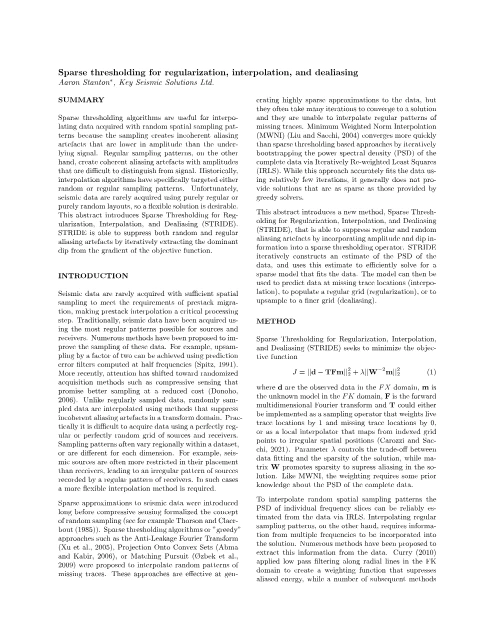
Sparse Thresholding for Regularization, Interpolation, and Dealiasing
September 2021
SEG 2021, Expanded Abstract
Aaron Stanton
https://library.seg.org/doi/10.1190/segam2021-3584024.1Sparse thresholding algorithms are useful for interpolating data acquired with random spatial sampling patterns because the sampling creates incoherent aliasing artefacts that are lower in amplitude than the underlying signal. Regular sampling patterns, on the other hand, create coherent aliasing artefacts with amplitudes that are dificult to distinguish from signal. Historically, interpolation algorithms have specifically targeted either random or regular sampling patterns. Unfortunately, seismic data are rarely acquired using purely regular or purely random layouts, so a exible solution is desirable. This abstract introduces Sparse Thresholding for Regularization, Interpolation, and Dealiasing (STRIDE). STRIDE is able to suppress both random and regular aliasing artefacts by iteratively extracting the dominant dip from the gradient of the objective function.
